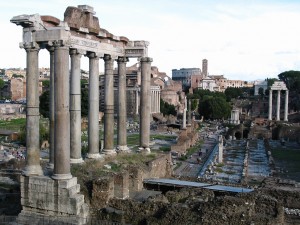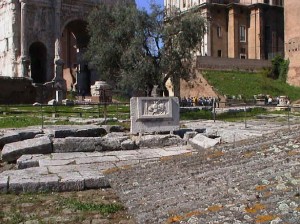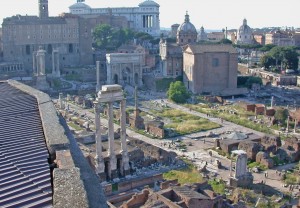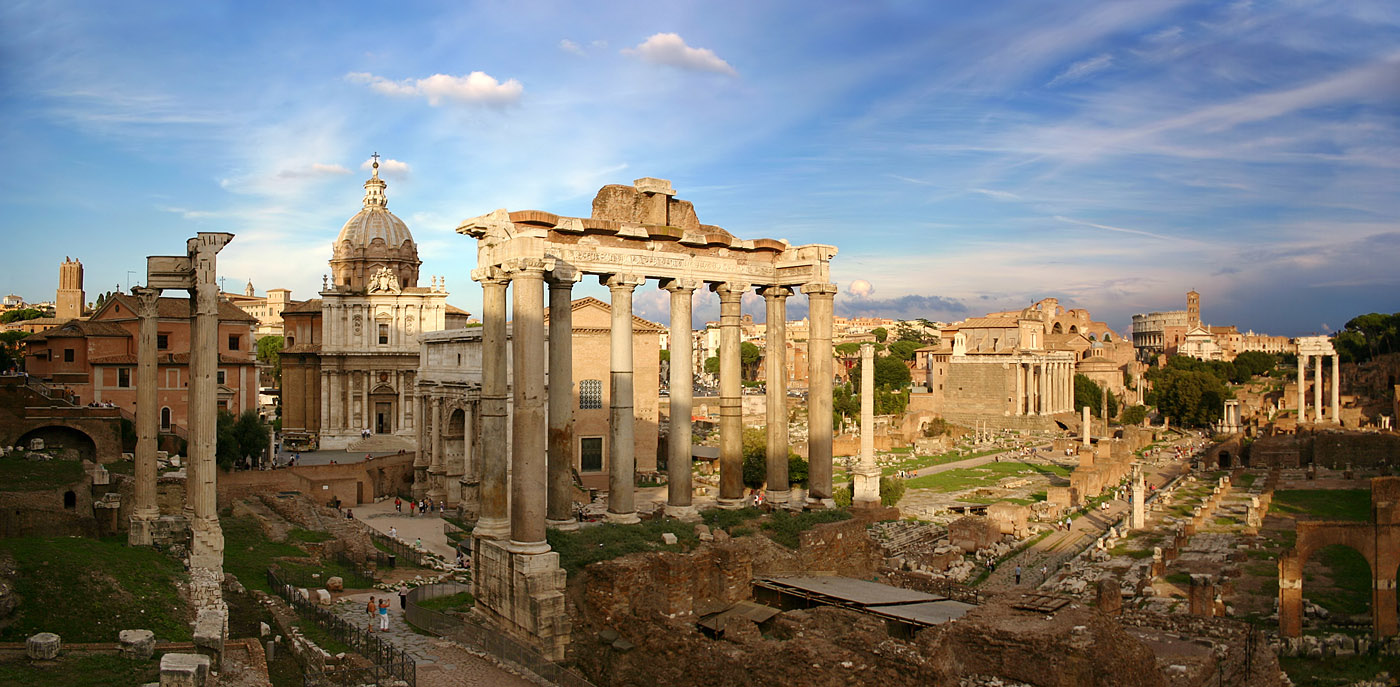Famous for its history and culture, Rome, the capital city of Italy, has something for everyone. Marvels are around every corner of the Eternal City and the proverb Rome wasn’t built in a day sounds so right as you visit it. Rome offers a chance to see some of the most interesting archaeological sites that provide a fascinating glimpse into ancient history.
 The Roman Forum, also known as Forum Romanum vel (et) magnum, the Forum Magnum or simply the Forum, began as a market place and became the heart of the Empire as well as the commercial, political, religious and administrative hub of ancient Roman life, crowded with people and filled with shrines, basilicas, triumphal arches and shops. After the fall of Rome, this area became pasture.
The Roman Forum, also known as Forum Romanum vel (et) magnum, the Forum Magnum or simply the Forum, began as a market place and became the heart of the Empire as well as the commercial, political, religious and administrative hub of ancient Roman life, crowded with people and filled with shrines, basilicas, triumphal arches and shops. After the fall of Rome, this area became pasture.
The Roman Forum still includes the remains of the government and some buildings. If you walk to the top of Rome’s Palatine Hill, you will enjoy awesome views of the whole city, spanning from the Coliseum to the Forum and the Altare della Patria.
Throughout history, the Forum has been built and rebuilt time after time, so its relics actually date back to different periods. What you can see now are not the ruins from just one era, but from a span of nearly 1000 years, from approximately 500 B.C. to 400 A.D.
Today, the Forum Romanum can look like a collection of ruins, but with some imagination you can really get a glimpse of what Roman life was like. With its columns, fragments and remains of buildings from different periods, the Forum is a must-see tour when visiting Rome. Some of the structures within the Forum Magnum include three columns from the Temple of Castor and Pollux, a number of temples, the Arch of Titus and the ruins of Palatine Hill.

Lacus Curtius
The Roman Forum: Lacus Curtius
Almost in the centre of the Roman Forum is the Lacus Curtius, which is actually not a lake now. Its name clearly indicates that it was a lake and it is very likely that there was a lake on the Roman Forum. It is arguably the most mysterious monument on the Forum and is marked by remnants of an ancient altar.
The Roman Forum: Cloaca Maxima
The stunning archaeological complex that is the valley of the Forum Romanum was originally just a marsh with cattle paths between the Palatine and Capitoline hills, used as a graveyard in the Iron Age. The land was drained and huts and a market center were established here in the course of years.
 It became the center of Rome only after drainage, filling and building the Cloaca Maxima, the Greatest Sewer of Rome, to drain water from the marshlands of the valley between the Palatine, Capitoline and Esquiline hills to the River Tiber and to remove the waste of Ancient Rome.
It became the center of Rome only after drainage, filling and building the Cloaca Maxima, the Greatest Sewer of Rome, to drain water from the marshlands of the valley between the Palatine, Capitoline and Esquiline hills to the River Tiber and to remove the waste of Ancient Rome.
The Roman Forum: Lapis Niger
Lapis Niger is Latin for black stone. It is an ancient shrine in the Roman Forum that marks the spot where the first king of Rome, Romulus, was murdered by the senate. The Lapis Niger is now surrounded by railings.


